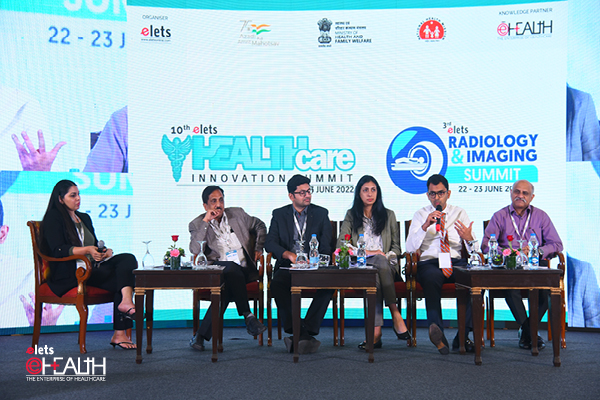
The rapid evolution in technologies has opened new vistas to transform and reshape India’s radiology sector. The growing influence of evolving technologies like Artificial Intelligence (AI), robotics, and automation is playing the role of integral enablers for enhancing precision in medicine, boosting the efficacy of radiology & imaging, and improving service delivery and customer experience.
Artificial Intelligence in Digital Radiography (DR) & Computer Radiography (CR): The global scenario

Shilpa Singh, Assistant Professor and Radiation Safety Officer, Maharishi Markandeshwar University – “In developing countries like India, the doctor-to-patient ratio is very low. We require systems like Artificial Intelligence that can be incorporated to help patients get timely treatment.”
 Dr Geetanjali Nanda, Consultant Radiologist, Mahajan Imaging – “Every decade we have keywords like the IT industry, and smartphones but this time we have ‘Artificial Intelligence.’ The advent of AI in radiology has been due to the exponential improvement in the computation power of computers in the last five years or so.”
Dr Geetanjali Nanda, Consultant Radiologist, Mahajan Imaging – “Every decade we have keywords like the IT industry, and smartphones but this time we have ‘Artificial Intelligence.’ The advent of AI in radiology has been due to the exponential improvement in the computation power of computers in the last five years or so.”
Dr Amit Kumar Sahu, Consultant Radiologist, Max Hospital, Saket – “The problem that we are facing today is the integration of AI-integrated software with the current PACS that we are using. We need to have a proper incubator be it a government hospital or private institute and then train the developing AI software.

 Dr Abhinav Jain, Professor and Head of Department, Hamdard Institute of Medical Sciences and Research (HIMSR)- “The biggest limitation is the source of information that is used to generate data or a network that is not so robust. The other limitation is a lack of confidence.”
Dr Abhinav Jain, Professor and Head of Department, Hamdard Institute of Medical Sciences and Research (HIMSR)- “The biggest limitation is the source of information that is used to generate data or a network that is not so robust. The other limitation is a lack of confidence.”
Contemporary Ultrasound Technology – Transforming Imaging
Dr Kavita Aneja, Director and Senior Consultant, Images Ultrasound Centre – “Samrakshan (a screening program of pregnant women) categorically emphasizes the role of color doppler in each and every scan in the third trimester.”
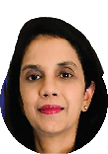 Dr Alka A Singhal, Associate Director Radiology, Medanta Medicity – “The use of technology over a period of time is being used for diagnosis and management, we need to take it to the next level lab that screens wellness.”
Dr Alka A Singhal, Associate Director Radiology, Medanta Medicity – “The use of technology over a period of time is being used for diagnosis and management, we need to take it to the next level lab that screens wellness.”
Dr Tandra Sarkar, Senior Consultant Radiologist, Apollo Multispeciality Hospitals, Kolkata – “Elastography is one important module that can be down staged or upgraded. The sensitivity is very high on elastography and could be specific up to 85-95 per cent.”
 Dr Rahul Sachdev, Director, B R Diagnostics – “We see a lot of gastroenterologists who are happier with a machine named Fibroscan made of Eco scan and essentially that uses transient elastography.”
Dr Rahul Sachdev, Director, B R Diagnostics – “We see a lot of gastroenterologists who are happier with a machine named Fibroscan made of Eco scan and essentially that uses transient elastography.”
Role of CT Scan in the growth of Imaging
Dr Gauraw Srivastava, Senior Consultant Radiologist, Medanta Medicity – “The role of CT Scan has changed a lot over the last 40-50 years. Today CT Scan is touching every part of the body starting from head to toe.”
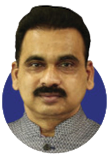 Dr Nitin Thorve, Chairman & Managing Director, Nidan Group of Companies -”There are lots of innovations from the technology perspective. We got the convention full body scanner and later on spiral CT Scans. Today we even have portable CT Scanners. Lots of innovations are going on in terms of machines and technology or even the use of AI.”
Dr Nitin Thorve, Chairman & Managing Director, Nidan Group of Companies -”There are lots of innovations from the technology perspective. We got the convention full body scanner and later on spiral CT Scans. Today we even have portable CT Scanners. Lots of innovations are going on in terms of machines and technology or even the use of AI.”
Dr Gaurav Kapoor, Associate Director and HOD, Max Hospital – “CT Scans have evolved a lot during the last decades because of technological innovations and advancements, and the inherent advantages of CT as mortality. Technological advancements are rapidly increasing.”
 Dr Vidit Gaur, Consultant Radiologist and Managing Director, Q Diagnostics (Grayscale Diagnostics Pvt Ltd) – “There is a growth of imaging in the future, and we as a radiologist have to be a part of that. We have to accept every aspect of things including technology, machinery, and accessibility.”
Dr Vidit Gaur, Consultant Radiologist and Managing Director, Q Diagnostics (Grayscale Diagnostics Pvt Ltd) – “There is a growth of imaging in the future, and we as a radiologist have to be a part of that. We have to accept every aspect of things including technology, machinery, and accessibility.”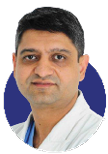
Dr Abhay Kapoor, Senior Consultant and Head of Unit, Rajiv Gandhi Cancer Institute and Research Centre – “The advances and CT scans have not only helped interventional radiology but also the patients to a large extent. Without the recent advances in CT scans, our life would have been very difficult.”
Pandemic Transforming Radiology: Roadmap for Success
 Dr Sanjay Dhawan, Senior Consultant & HOD, Paras Hospitals – “The pandemic has been a revelation. Radiology practice has evolved because of the pandemic. There have been a lot of adaptations of technology.”
Dr Sanjay Dhawan, Senior Consultant & HOD, Paras Hospitals – “The pandemic has been a revelation. Radiology practice has evolved because of the pandemic. There have been a lot of adaptations of technology.”
Dr Sangeet Bhalla, Lead and Consultant Radiologist, Medeor Hospital – “Radiology has always been at the forefront of telemedicine being one of the first branches to diversify into the technology vertical despite all the shortcomings during the pandemic. Technology has taken a front seat and driven us through this pandemic.”
 Dr Meinal Chaudhry, Director – Radiodiagnosis and Intervention Radiology, Aakash Healthcare Super Speciality Hospital – “The department of radiology came out stronger and a lot of things worked in our favor. There are a lot of positive things that we learned from this pandemic.”
Dr Meinal Chaudhry, Director – Radiodiagnosis and Intervention Radiology, Aakash Healthcare Super Speciality Hospital – “The department of radiology came out stronger and a lot of things worked in our favor. There are a lot of positive things that we learned from this pandemic.”
Emerging Technologies redefining critical care and digital radiology – Easing Patient Experience
Dr Indira Raju Kakarla, Managing Director & Consultant Radiologist, Infinity Diagnostics – “AI helps radiologists in decreasing their workload, because they have a lot of pressure and it is a possibility of having human errors. AI helps us in the initial steps. We are not going to totally depend on AI, we’ll always be needing a radiologist to go through the reports.”
 Dr Deepali Saxena, Senior Consultant Radiologist & Lead Cardiothoracic Imaging, Manipal Hospitals Radiology Group (MHRG) – “Today in MRI Scanners, what we are getting is faster acquisition and better image resolution. We have an AI user interface that is really easy to use and understand. It assists, helps, and prompts the technologist until the patient is correctly positioned. All this results in improved imaging quality.”
Dr Deepali Saxena, Senior Consultant Radiologist & Lead Cardiothoracic Imaging, Manipal Hospitals Radiology Group (MHRG) – “Today in MRI Scanners, what we are getting is faster acquisition and better image resolution. We have an AI user interface that is really easy to use and understand. It assists, helps, and prompts the technologist until the patient is correctly positioned. All this results in improved imaging quality.”
Dr Arunkumar Govindrajan, Director and Radiologist, Aarthi Scans and Labs – “We tried our hands on AI and implemented a chest X-ray AI engine and 6 months later we came up with CT brain AI engine into our platforms. Initially, we tried these in tier 2 and tier 3 cities.”
 Dr Susil Kumar Meher, Head Health- IT, AIIMS – “PACS is available everywhere be it in radiology departments, emergency departments, neurology, or urology. We have a variety of PACS available with us. We have also performed KPI which is also satisfying. People use AI tools but their accuracy should also be maintained.”
Dr Susil Kumar Meher, Head Health- IT, AIIMS – “PACS is available everywhere be it in radiology departments, emergency departments, neurology, or urology. We have a variety of PACS available with us. We have also performed KPI which is also satisfying. People use AI tools but their accuracy should also be maintained.”
Rahil Shah, Director, NM Medical – “In mammography, we have 3 digital mammography systems and there are invaluable benefits in terms of patient experience, patient comfort, quality in terms of early detection of cancer, and lower radiation. Widespread adoption of digital radiography can adopt ROI. It provides significant improvement in quality, safety, and throughput, and reaches no limitations where X-rays and mammograms can be performed. In the coming 3-5 years we see analog systems getting replaced with digital radiography.”
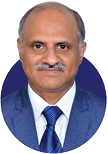 Dr (Col) Vikas Rastogi, Director Radiology and Interventional Radiology, Dharamshila Narayana Superspeciality Hospital – “When we talk of developments in the healthcare sector primarily the focus is on four segments and the maximum number of investment is used in liquid biopsy, then use of artificial intelligence in healthcare followed by computation platforms and enhancing patient comfort.”
Dr (Col) Vikas Rastogi, Director Radiology and Interventional Radiology, Dharamshila Narayana Superspeciality Hospital – “When we talk of developments in the healthcare sector primarily the focus is on four segments and the maximum number of investment is used in liquid biopsy, then use of artificial intelligence in healthcare followed by computation platforms and enhancing patient comfort.”
Role of MRI in growth of Radiology
Dr Shoma Mukerjee, Chief Consultant Radiology-Head of Department, Mahajan Imaging/ Fortis Hospital – “We have moved on to cardiac MRI, where we are able to move into the beating heart. We can not just assess the shape and size of the heart but could also tell our clinicians and patients how it functions.”
 Dr Shaafiya Ashraf, Assistant Professor, Radiodiagnosis, Government Medical College, Srinagar – “MRI has proven to be a game changer. There are mainly two reasons for that, first is- the inherent advantage of MR as mortality, and the second advantage is that in the current scenario there has been a significant reduction in the threshold of getting an MRI done. The level has significantly come down because the availability of multiple MRI scanners in the public and private sectors.”
Dr Shaafiya Ashraf, Assistant Professor, Radiodiagnosis, Government Medical College, Srinagar – “MRI has proven to be a game changer. There are mainly two reasons for that, first is- the inherent advantage of MR as mortality, and the second advantage is that in the current scenario there has been a significant reduction in the threshold of getting an MRI done. The level has significantly come down because the availability of multiple MRI scanners in the public and private sectors.”
Jyoti D., Assistant Professor and Head of Medical Radiology & Imaging Technology (MRIT) Department, Sushant University – “Radiology is often said to be the backbone of any hospital. Mortality is definitely the eye of healthcare. For many decades we have seen good growth in radiology from conventional radiography and dark rooms. We are now spreading our wings towards digitalisation.”
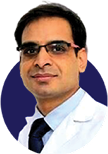 Dr Yashwant Patidar, Additional Professor, Dept of Interventional Radiology, Institute of Liver and Biliary Sciences – “If MRI interventions require 3-4 hours for doing big procedures then CT interventions require an hour.”
Dr Yashwant Patidar, Additional Professor, Dept of Interventional Radiology, Institute of Liver and Biliary Sciences – “If MRI interventions require 3-4 hours for doing big procedures then CT interventions require an hour.”
Dr Deepali Saxena, Senior Consultant Radiologist & Lead Cardiothoracic Imaging, Manipal Hospitals Radiology Group (MHRG) – “We are going to have a bull market for MRI imaging with cardiovascular MRI, interventional MRI procedures, muscular-skeletal MRIs, and MR imaging in teleradiology.”
Be a part of Elets Collaborative Initiatives. Join Us for Upcoming Events and explore business opportunities. Like us on Facebook , connect with us on LinkedIn and follow us on Twitter , Instagram.












